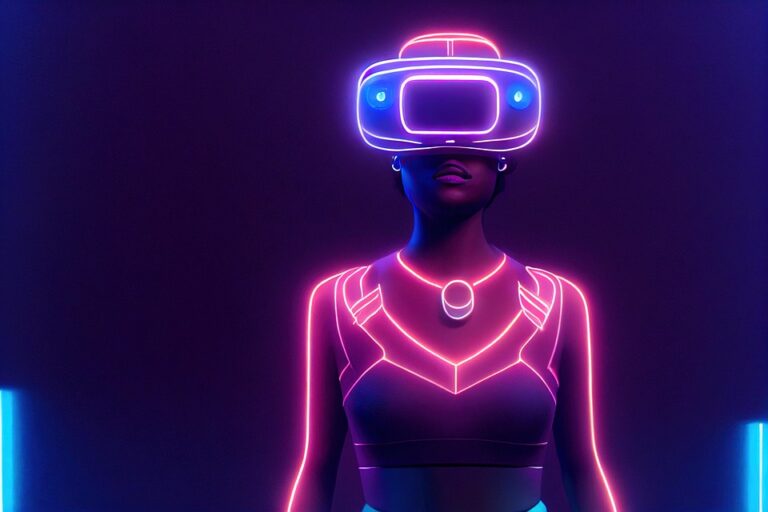The Impact of Virtual Reality Games on Traditional Gaming: A Comparative Analysis
The gaming industry has experienced an evolution over the past few decades, with innovations frequently reshaping how players engage. Among these innovations, virtual reality games are taking center stage. This article delves into the impact of virtual reality on traditional gaming, offering a comprehensive comparative analysis that highlights the strengths and weaknesses of each medium.
Understanding Traditional Gaming and Virtual Reality Games
What Are Traditional Games?
Traditional gaming encompasses a variety of formats, including console, PC, and mobile games. These games have been the backbone of the industry, providing immersive experiences through engaging graphics, storytelling, and player interaction. However, traditional gaming often relies on flat screens and gamepads, leading to a less immersive experience.
The Rise of Virtual Reality Games
In contrast, virtual reality games offer a groundbreaking immersion into digital worlds. Utilizing VR headsets and motion-tracking devices, players find themselves physically present in these environments. This technology allows for a unique interaction with the game that conventional gaming does not offer.
Comparing User Experience
Immersion Level
One of the most significant advantages of virtual reality games is the degree of immersion they provide. According to a recent report, 72% of VR gamers state that they feel significantly more engaged in VR than in traditional gaming formats. This level of immersion can lead to a more emotionally impactful gaming experience.
Physical Interaction vs. Traditional Controls
Virtual reality games require players to engage physically, enhancing the gaming experience through active participation. Players use their bodies to control their avatars, making gameplay feel much more lifelike. In contrast, traditional games often use standard controllers, which can create a disconnect between the player and the game world.
Example: Beat Saber vs. Call of Duty
Consider the difference between a VR game like Beat Saber and a classic FPS like Call of Duty. In Beat Saber, players use motion controllers to slice through blocks in a rhythmic challenge, feeling as if they’re part of the action. Conversely, Call of Duty players are limited to screen-only engagement, using thumbs on a controller, which can feel detached compared to the full-body experience that VR provides.
Market Trends and Statistics
Growth of VR in the Gaming Industry
The virtual reality gaming market is projected to reach $12 billion by 2024, a significant increase from $1.5 billion in 2016. This growth reflects a greater acceptance of VR technologies in gaming, as developers create more titles that leverage VR’s unique capabilities.
User Demographics
Research shows that 45% of VR gamers are aged between 18-34. This demographic trend indicates that younger players are more inclined to seek immersive experiences, favoring virtual reality games over traditional formats.
Limitations of Virtual Reality Games
While the advantages of virtual reality games are appealing, they come with significant limitations.
Cost Barrier
One of the primary challenges of VR gaming is the cost. High-quality VR headsets and compatible equipment can set a player back by several hundred dollars. Many dedicated gamers may find this financial hurdle impractical compared to the often lower investment required for traditional gaming.
Physical and Emotional Fatigue
Another downside is the potential for physical and emotional fatigue. Extended periods of immersive gameplay can lead to motion sickness or discomfort, making some players hesitant to engage in VR for long periods. Traditional gaming, while still capable of causing fatigue, generally presents a less intense experience.
The Future: Integration of Both Mediums
As we move forward, the gaming industry is likely to see a blend of both traditional gaming and virtual reality games. Developers are creating hybrid experiences that incorporate elements of VR into traditional game formats. For instance, titles like Half-Life: Alyx have set the stage for future games to offer both immersive and traditional gameplay styles.
Engaging with Both Worlds
To maximize gaming experiences, embracing both traditional gaming and VR will become increasingly important. While VR offers unparalleled immersion, traditional games possess narratives and gameplay mechanics that can complement VR experiences.
Conclusion
The impact of virtual reality games on traditional gaming is profound, reshaping player experiences and industry standards. As the market for VR continues to grow, players and developers alike must adapt to this evolving landscape, embracing both platforms for a richer gaming experience.
For more insights into gaming trends, check out our articles on The Future of Game Development and Top 10 VR Games of 2023. Additionally, for further reading, visit Statista’s Global Gaming Market Overview for credible data supporting this article.
Suggested Images
-
Image of a gamer using a VR headset
- Alt text: "A player immersed in virtual reality games."
- Image showing the comparison of game controllers
- Alt text: "Traditional gaming controllers versus virtual reality game controllers."
By integrating immersive technology with traditional formats, the gaming industry stands on the brink of an exciting future, filled with opportunities for deeper engagement and richer player experiences.


